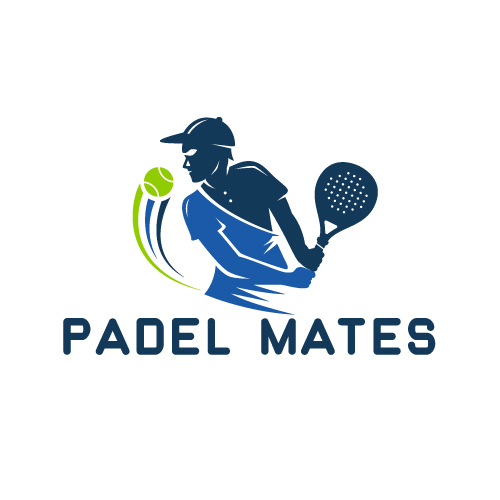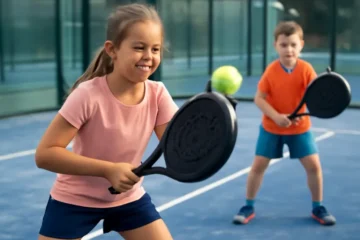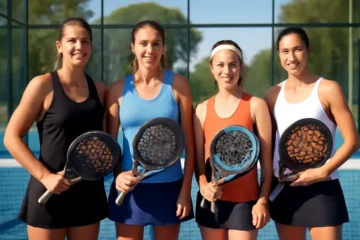In the world of racquet sports, padel, tennis, and pickleball have gained immense popularity among enthusiasts looking for fun, competition, and fitness. While they share similarities in using racquets and balls, each sport has unique rules, equipment, court dimensions, and playing styles. Whether you’re a beginner trying to pick the right sport or an experienced player exploring a new challenge, understanding the key differences between padel, tennis, and pickleball can help you make an informed decision.
What is Padel?
Padel is a racquet sport that originated in Mexico in the 1960s and has since gained huge traction, especially in Spain and Latin America. It is typically played in doubles on an enclosed court smaller than a tennis court. The walls play an integral part of the game, similar to squash, making for fast-paced, strategic gameplay.
What is Tennis?
Tennis is a globally recognized sport with a rich history dating back centuries. It can be played in singles or doubles on a rectangular court, either indoors or outdoors. Tennis requires strength, agility, and precision, with a scoring system and rules that are widely standardized across the globe.
What is Pickleball?
Pickleball is a relatively newer sport created in the United States during the 1960s. Combining elements of tennis, badminton, and ping pong, it is played on a smaller court with a paddle and a plastic ball. Its ease of learning and minimal physical strain have made it especially popular among older adults, although it’s gaining momentum across all age groups.
1. Court Size and Surface
Padel:
- Court size: 20m x 10m (approximately 66ft x 33ft)
- Enclosed with glass or mesh walls
- Net divides the court into two halves
- Synthetic turf or artificial grass is commonly used
Tennis:
- Court size: 23.77m x 8.23m for singles; 23.77m x 10.97m for doubles
- Open court with no walls
- Surface can be clay, grass, or hard court
Pickleball:
- Court size: 13.41m x 6.10m (44ft x 20ft)
- No walls; open court
- Typically played on hard surfaces like asphalt or concrete
2. Equipment
Padel:
- Solid, stringless racquets made of composite materials
- Pressurized tennis-like balls
Tennis:
- Strung racquets with various materials and string tensions
- Pressurized or unpressurized tennis balls
Pickleball:
- Solid paddles made from wood, composite, or graphite
- Lightweight plastic balls with holes (wiffle balls)
3. Scoring System
Padel:
- Same scoring system as tennis (15, 30, 40, game)
- Usually played as best of three sets
Tennis:
- Traditional scoring (15, 30, 40, game, set, match)
- Can be best of 3 or 5 sets depending on the level of play
Pickleball:
- Games played to 11 points (win by 2)
- Points can only be scored on the serve
4. Serving Rules
Padel:
- Underhand serve below waist level
- Ball must bounce before hitting it
- Serve diagonally into opponent’s box
Tennis:
- Overhead serve from behind the baseline
- Two chances per serve
- Serve diagonally
Pickleball:
- Underhand serve
- Paddle must pass below the waist
- Serve diagonally and land in the opposite service box
5. Gameplay and Strategy
Padel:
- Walls are used strategically for ball rebounds
- Fast-paced with an emphasis on reflexes and teamwork
- Doubles format encourages strategic net play and lobs
Tennis:
- Powerful baseline shots and net play
- Mix of singles and doubles games
- Requires speed, endurance, and precise shot placement
Pickleball:
- Emphasis on dinking (soft shots) and placement over power
- Slower pace but requires quick reflexes
- Popular for its social and inclusive atmosphere
6. Physical Demand and Accessibility
Padel:
- Moderate physical activity
- Easier on the joints due to slower pace and smaller court
- Suitable for players of all ages
Tennis:
- High physical demand
- Requires more endurance and power
- More challenging for beginners
Pickleball:
- Low to moderate physical intensity
- Easy to learn and play
- Very accessible for beginners and older adults
7. Popularity and Growth
Padel:
- Explosive growth in Europe and Latin America
- Becoming more popular in the U.S. and Middle East
- Growing professional leagues and tournaments
Tennis:
- Well-established with global reach
- Featured in major international competitions like the Olympics, Wimbledon, and US Open
- Longstanding history with millions of active players
Pickleball:
- Rapidly growing in North America
- Increasing adoption in community centers and schools
- Strong recreational and competitive scenes emerging
Which One is Right for You?
Choose Padel if:
- You enjoy strategic, fast-paced games
- You like playing doubles
- You want a mix of tennis and squash dynamics
Choose Tennis if:
- You seek a high-intensity, full-body workout
- You enjoy one-on-one competition or traditional doubles
- You appreciate a globally recognized sport with structured rules
Choose Pickleball if:
- You’re looking for a low-impact, social game
- You want something easy to learn and play
- You’re playing in a smaller space or with mixed-age groups
Conclusion
Padel, tennis, and pickleball each offer unique experiences that cater to different skill levels, physical capabilities, and personal preferences. While they all fall under the racquet sports umbrella, their differences in court size, equipment, scoring, and gameplay make each one distinct. Whether you’re drawn to the strategic excitement of padel, the athleticism of tennis, or the accessibility of pickleball, you’re sure to find enjoyment and fitness benefits in any of these fast-growing sports.
Exploring these options can also lead to cross-training opportunities that improve your overall agility, coordination, and court awareness. So, grab your racquet or paddle, hit the court, and discover which sport fuels your passion.
❓ FAQs
1. What is the main difference between padel, tennis, and pickleball?
Padel is played on a smaller, enclosed court using solid racquets and involves wall play. Tennis uses stringed racquets on a larger open court with powerful strokes. Pickleball is played with paddles and a plastic ball on a smaller court, emphasizing softer, more strategic shots.
2. Is padel easier to play than tennis?
Yes, padel is generally easier for beginners due to the smaller court size, slower ball speed, and emphasis on doubles play. It requires less physical exertion compared to tennis.
3. Which sport is more suitable for older adults: pickleball or tennis?
Pickleball is often preferred by older adults because of its low-impact nature, smaller court size, and ease of learning. It’s more accessible and less physically demanding than tennis.
4. Can tennis players easily switch to padel or pickleball?
Yes, tennis players often transition well to padel or pickleball due to similar footwork and hand-eye coordination. However, each sport has unique techniques and strategies that require some adjustment.
5. Is pickleball becoming more popular than tennis?
Pickleball is experiencing rapid growth, especially in North America. While it hasn’t overtaken tennis in global popularity, its accessibility and community vibe have attracted a broad range of players.




